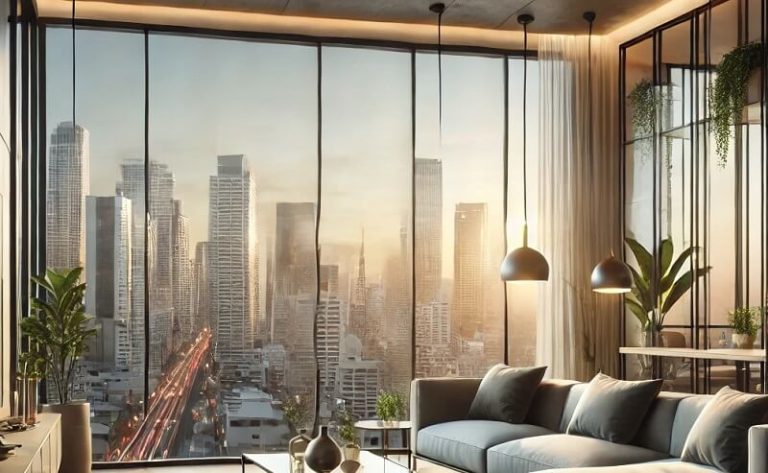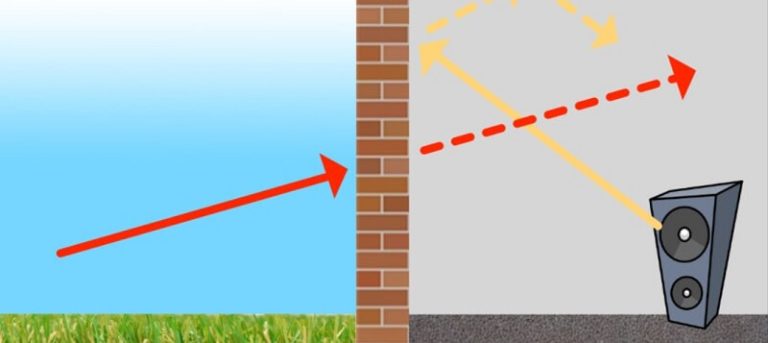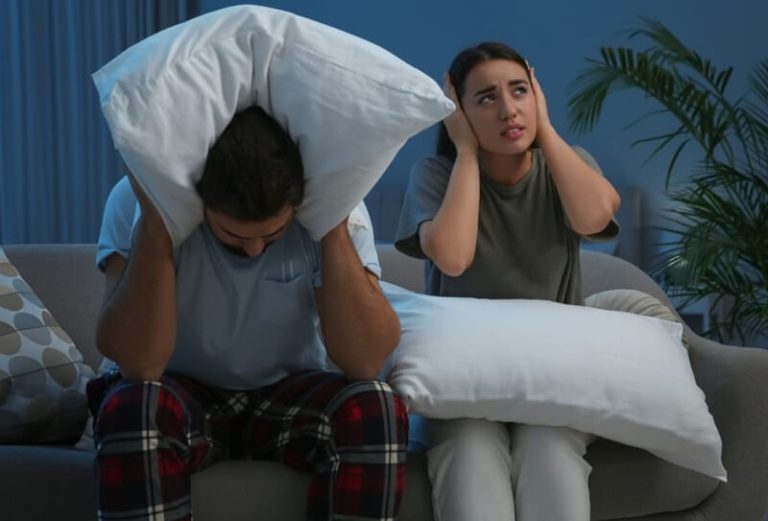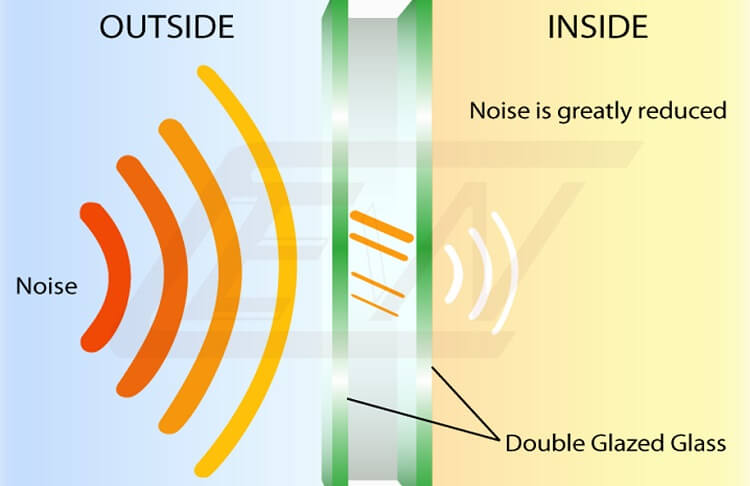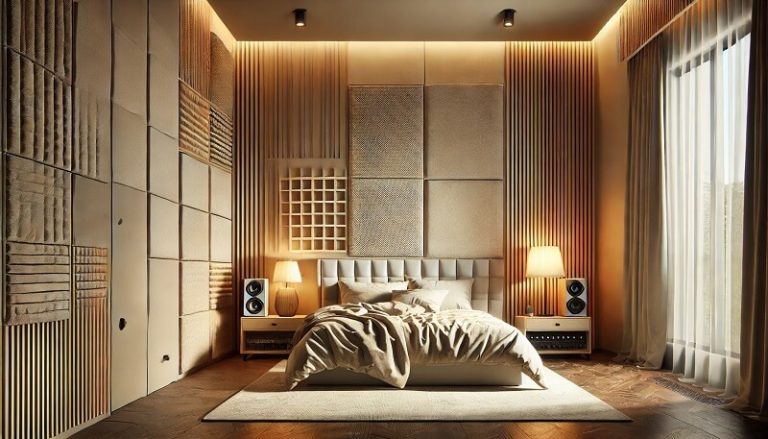
Did you know that chronic noise exposure can significantly impact your sleep quality, leading to increased stress, reduced productivity, and even health problems? If you’re struggling with unwanted noise in your bedroom, whether it’s the constant hum of traffic or disturbances from shared walls, you’re not alone. This comprehensive guide explores effective strategies to address this common problem and create a peaceful sanctuary for restful sleep.
How can I reduce traffic or shared wall noise in bedrooms? Let’s explore the answers.
Identifying Sources of Noise
Before tackling the noise, it’s crucial to pinpoint its origin and how it enters your bedroom. This allows you to target your efforts for maximum effectiveness.
Traffic Noise
Traffic noise is a pervasive issue, especially in urban environments.
It encompasses a range of sounds, including:
- Cars and motorcycles
- Honking and sirens
- Construction sounds
- Low-frequency vibrations from heavy vehicles
How It Enters
These noises typically infiltrate your bedroom through:
- Poorly insulated windows
- Gaps and cracks in walls, doors, and around window frames
- Ventilation ducts
Shared Wall Noise
Sharing walls often means sharing unwanted sounds, such as:
- Conversations
- Music or TV sounds
- Vibrations from appliances or furniture movement
- Plumbing noises
Common Entry Points
These sounds often travel through:
- Thin walls lacking proper insulation
- Unsealed gaps around outlets, baseboards, light fixtures, and pipes
- Shared ventilation systems
Measuring Noise Levels
To get a clearer understanding of the noise levels you’re dealing with, consider using a sound meter app on your smartphone. These apps can measure the decibel (dB) level of the noise, helping you track progress and identify the most problematic noise sources.
Materials to Combat Noise
Various materials can effectively block or absorb unwanted sounds. Understanding their properties and applications will help you choose the right solutions for your specific needs.
Mass Loaded Vinyl (MLV)
Description: A dense, flexible material highly effective at blocking sound transmission.
Applications: Walls, ceilings, floors, and doors.
Benefits: High STC rating, relatively easy to install, available in various thicknesses and densities.
Acoustic Foam Panels
Description: Lightweight panels designed to absorb sound waves, reducing echo and reverberation within a room.
Applications: Walls, ceilings, and inside furniture.
Benefits: Improves room acoustics, reduces internal noise reflections, relatively inexpensive.
Soundproof Curtains
Description: Heavy, multi-layered curtains designed to block both sound and light.
Applications: Windows and doors.
Benefits: Affordable, easy to install, adds a decorative touch.
Double-Glazed Windows
Description: Windows with two panes of glass separated by an air or gas-filled space.
Applications: Exterior windows.
Benefits: Significantly reduces noise transmission, improves energy efficiency.
Steps to Reduce Traffic Noise
Seal Gaps and Cracks
Identify Weak Points: Carefully inspect windows, doors, and walls for any gaps or cracks.
Seal Windows: Apply weatherstripping around window frames.
Use acoustic caulk to seal any remaining gaps or cracks.
Reinforce Walls: Use foam sealant for cracks in walls. Consider adding MLV behind drywall for increased sound blocking.
Install Soundproof Curtains
Choose Heavy Fabrics: Look for curtains with a high weight and density, specifically designed for noise reduction.
Enhance Effectiveness: Install curtains with a track system that seals against the wall for maximum sound blockage.
Upgrade Windows
Replace Single-Pane Glass: Double or triple-glazed windows offer significant improvements in noise insulation.
Add Window Inserts: A more affordable alternative to window replacement. These acrylic panels fit inside your existing windows, creating an additional sound barrier.
Add Exterior Barriers
Plant Vegetation: Strategically planted trees and shrubs can help diffuse and absorb sound waves.
Install Fences: A solid fence can create a barrier against traffic noise.
Steps to Reduce Shared Wall Noise
Add Mass to Walls
Attach MLV: Install MLV directly to the existing wall before adding a new layer of drywall.
Install Drywall: Add a second layer of drywall using resilient channels. These channels decouple the drywall from the wall studs, minimizing vibration transfer.
Use Acoustic Panels
Placement Matters: Position panels strategically on the shared wall, focusing on areas where noise is most prominent.
Combine with Fabric Panels: Cover acoustic panels with decorative fabric for a more aesthetically pleasing solution.
Seal Wall Gaps
Acoustic Caulk: Seal any gaps around electrical outlets, light switches, pipes, and baseboards with acoustic caulk.
Consider Built-In Solutions
Insulated Wall Partitions: If feasible, building a new insulated wall partition in front of the existing shared wall can provide significant noise reduction.
Fill the cavity with sound-absorbing insulation.
Real-Life Applications
Case Study 1: Urban Apartment – Traffic Noise Reduction
Problem: A resident in a busy city center experienced constant traffic noise, disrupting sleep and making it difficult to relax at home. Noise levels regularly exceeded 70 dB during peak hours.
Solution: The resident installed high-quality, double-glazed windows with a laminated glass layer for enhanced sound insulation. They also added custom-made soundproof curtains with a dense, noise-blocking fabric.
Weatherstripping was applied to all window and door frames.
Result: The combination of double-glazed windows and soundproof curtains reduced the traffic noise by approximately 20 dB, creating a much more peaceful living environment.
Case Study 2: Shared Wall Noise in a Townhouse
Problem: Loud music and conversations from neighbors frequently disturbed the residents of a townhouse. The thin shared wall provided minimal sound insulation.
Solution: MLV was installed on the shared wall, followed by a new layer of drywall attached with resilient channels. Acoustic panels were strategically placed on the wall, focusing on areas where noise was most prevalent.
Result: The combination of MLV, resilient channels, and acoustic panels significantly reduced noise transfer, leading to a noticeable improvement in privacy and peace.
FAQ
What is the fastest way to reduce traffic noise?
Hanging soundproof curtains and sealing window gaps with weatherstripping are quick and cost-effective solutions that can provide noticeable improvement.
Can shared wall noise be reduced without renovation?
Yes, strategies like using acoustic panels, strategically placing bookshelves or other furniture against the shared wall, and sealing gaps with acoustic caulk can help reduce noise without major renovations.
Are double-glazed windows effective against noise?
Yes, double-glazed windows, particularly those with laminated glass and a wide air gap, are highly effective at reducing noise transmission.
The larger the air gap, the better the sound insulation.
Do I need professional help for soundproofing?
While DIY solutions can be effective for minor noise issues, professional installation is recommended for complex problems or for achieving optimal soundproofing results. A professional acoustician can assess your situation and recommend the most appropriate solutions.
Conclusion
Creating a tranquil bedroom environment is within reach, even when facing challenges like traffic or shared wall noise. By carefully identifying the noise sources and understanding the principles of soundproofing, you can choose the most effective strategies for your specific needs and budget.
Whether you opt for quick fixes like soundproof curtains and weatherstripping or invest in more substantial solutions like double-glazed windows and MLV, taking action towards a quieter bedroom will greatly enhance your sleep quality and overall well-being. Begin your journey to a more peaceful bedroom today!

